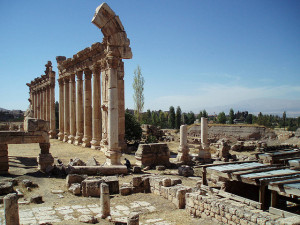
The social contract between society and power, long restraining political unrest in the masses living under authoritarian regimes, lost its legitimacy as soon as the government was found to be incapable of limiting the growth of food prices, which served to ignite the social protests of 2011 and began the “Arab Spring.”
A deficit in the production of foodstuffs in the region is compensated for by foreign imports. The world’s nine leading importers of wheat are found in the countries of the Middle East and social protests broke out it in seven of them. The countries of the Arab East are extremely vulnerable to fluctuations of global prices, the growth of which in 2008-2011 was based on ecological causes such as the droughts in many regions of the world which, in the opinion of experts, were induced by climate change. The 10.7% rise in wheat prices in 2011 in Egypt (the number one importer of wheat in the world) gave rise to protests, dissatisfaction with political rulers and indirectly influenced the country’s regime change.
As for Syria, the country was stricken by drought from 2006-2011, the worst in many centuries. This brought about a drop in crop yields in 75% of the nation’s crop area, and the country lost 85% of its livestock. More than 3 million people lost the source of their livelihood. 50 thousand families were forced to migrate out of rural areas and into the city. All of this cannot but have had an effect on the political climate in the country.
In the opinion of the experts of the International Bank for Reconstruction and Development, as presented in their 2012 report “Adaptation to a Changing Climate in Arab Countries,” climate change may cancel out much of the progress made in the past several decades since the Middle East and Northern Africa are among the most sensitive to its consequences, first and foremost as concerns water shortages.
Because of the decrease in precipitation and an increase in atmospheric temperature, the water supply in the region may diminish by 10% by 2050 and this during a time in which demand for water, which already exceeds supply by 16%, may grow by 50%. Around 100 million individuals will face water shortages. Six of the ten most water deficient countries in the world are located in this region, where the amount of water available for the population does not exceed 1,000 m3 per year and per capita (seven times less than the global average), and temperature increases would cause this figure to drop to 460 m3 by 2025.
Even a small increase in atmospheric temperature in the region would negatively affect the flow of rivers. If, at the end of the century, the runoff of the rivers Euphrates and Jordan diminishes by 30% and 90%, respectively, the political situation in the area would become noticeably more strained, judging by the already present intergovernmental conflicts over the uses of shared water resources. One can foresee complications in relations between Israel and Palestine as well as between Iraq, Syria and Turkey, and Egypt, the Sudan and Ethiopia. In the case of the predicted climate changes, the future prospects for the regulation of water disputes between the countries seems, politically, extremely problematic.
The vulnerability of the region to climate change is exacerbated by a majority of the population’s dependence on farming and a concentration of population and industrial production in coastal areas which are subject to flooding. Lengthening periods of drought caused by increased atmospheric temperature, will turn into economic losses, measurable by a yearly 1% drop in DNP and a 1.4% rise in poverty since more than 70% of the population resides in rural areas and is engaged in natural-resource related work which is in extreme danger in the case of climate change. Agricultural production may fall by 20-40% by 2080 because of its dependence on rainfall, which will drop by 40% in Algeria and Morocco. Mass migration of farmers into cities will result from climate change, effecting destabilization of the political situation in the region’s countries.
Rising sea levels, also a consequence of climate change, pose a threat to the livelihood of people living in Bahrain, on the islands of the Persian Gulf, in Kuwait, Qatar, the UAE and in the Nile River delta. Only in Egypt, this will cause the forced resettlement of 6-8 million people and the loss of thousands of hectares of farmable land as a consequence of salt deposits from sea water.
To summarize, one can say with great certainty that climate change, in the context of the Middle East’s prospects for development, will bring about even in the near future an appreciable worsening of the economic, political and social conditions in the region’s countries and will exacerbate and initiate both intergovernmental and regional conflicts.
Natalia Rogozhina, Doctor of Political Science, Leading Researcher at IMEMO RAN, exclusively for the online magazine “New Eastern Outlook”.
